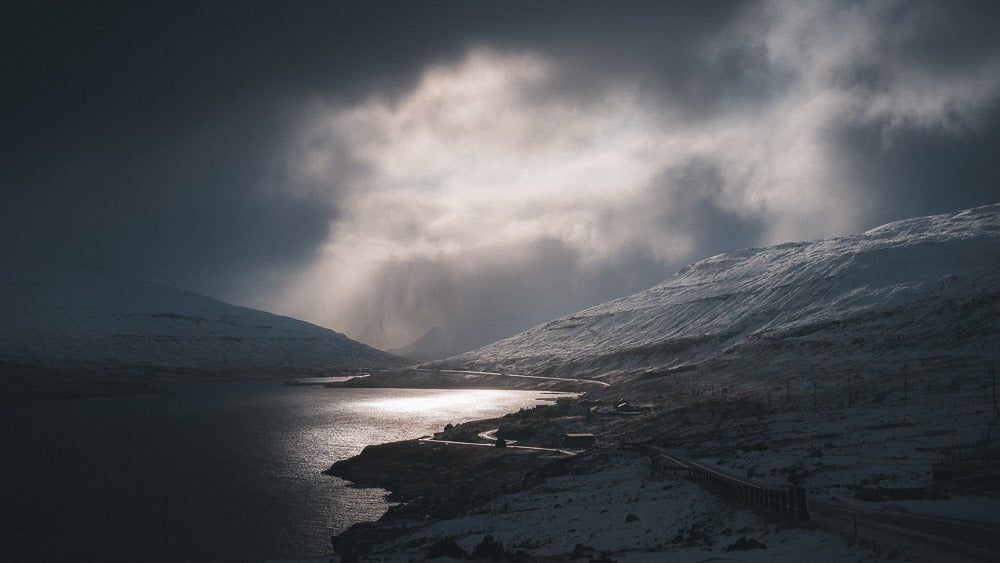This article is about the concept of what makes a good photograph.
It’s not about the technical components, it’s not about the gear, it’s not about the subjects. First, we need to start in the mind, then everything else flows from there.
Because of that, the definition and subsequent resolution of this article will be different for everyone; you’ll all arrive at a different understanding. We’re humans, after all. We all have different values.
And so, to start at the top: when thinking about good photographs, we need to think about good photographers.
Good photographers are good observers and good communicators.
What do I mean by that? And what does it have to do with photography?

Photography, a visual art form.
See, photography is a visual art form. You’ll hear me talk a lot about the idea of visual communication and /visual language/, because good photography, when deconstructed, is about the masterful use of both of these things - and although for now, this idea might sound a bit abstract, it’ll make sense the more we cover this idea together.
A photograph always has two participants: the photographer and the viewer. The image itself is a piece of communication between these two participants, and we can define the efficacy of this communication simply by its “success”. I.e. is an image “successful” or not? Does it successfully communicate the intention of the photographer to the viewer?
This is the baseline requirement.
If you’ve been trying to improve your photography, you might have heard other photographers refer to good photographs as ones that rouse emotion, or tell a story, or make you feel a certain way. And while they’re not wrong, these platitudes don’t capture the entire spectrum of what photographs are capable of.
A successful photograph is one where you understand the intent of what that photographer tried to communicate.
That’s it. Whether the intention of the photographer was to move you emotionally, or to surprise you with an interesting juxtaposition, or even to simply showcase the beauty of a landscape at a particular point in time, if you as the viewer understand the image - if you “get it” - then that image is successful at doing what it needs to do.
…but that doesn’t mean it’s “good”.
The difference between a “successful” photograph and a “good” one is a matter of social construct; just precisely who is the photograph good for, and what have they seen or experienced that makes them think an image is good or bad?
Everyone has a different level of visual language fluency. Not everyone has seen as many deliberate photographs as each other. Not everyone has an interest in improving their photography. Not everyone cares about the analytical deconstruction and how to reproduce “socially agreeable” images.
This means that everyone has varying levels of understanding the components and techniques that makeup visual language.
You may have heard some of these concepts before: vanishing points, frames, lines, contrast, colour, etc. etc. etc. Visual language is about understanding all of these things, but more importantly, understanding their usefulness and their relationships within the context of a composition and using them masterfully.
So the general population have a general idea of whether they “like” a photo or not, but they don’t understand why they like it. As photographers, we need to understand that why, so we can understand which tools in our toolkit communicate our intent the clearest.
A good photograph is all about intention
Consider this:
- If I wanted to evoke an idea of loneliness in a Street Photography image, I might employ more negative space to isolate the subject. I might even use a subdued colour palette or even a contrasting subject.
- If I wanted to showcase the beauty of a landscape, I might employ the use of vivid colour and vibrancy (or maybe not, it depends) to bring focus to its features. I might even use leading lines or a rule of thirds composition to draw attention to the natural elements within the scene.
- If I wanted to document a frantic tennis match, I might employ the use of movement, timed to the millisecond of the ball becoming deformed the moment it touches the racquet. I could fill the frame with this idea and have it as a side-piece to tell a larger story.

What makes a good photograph? Intention, intention, intention. The best photographers shoot with intention, carefully (and eventually, subconsciously) deciding what techniques of visual language to employ to best communicate their message. As a result, the best photographs communicate clearly such that the viewer understands it, immediately or progressively, but with always with clarity. That’s what makes a good photograph.
And for the record, not every frame you shoot needs to have some deep, meaningful, philosophical reasoning behind it. The record of simple, daily life is one of the most beautiful things a photographer can document, and I’ve lost count at the hundreds of thousands of images I’ve taken just for me that will never see the light day.
Again, a successful photograph is one where you understand the intention of the photographer. If that’s simply just to remember a moment; then that’s just as beautiful too.
tl;dr
A good photograph is all about intention.
The idea of a photograph being “good” is all about social construct and the individual visual language experience of the viewer.
However a “successful” photograph is one where the intention of the photographer has been communicated clearly in the image; whether that be some profound, meaningful message, or just a simple documentation of everyday life.
Whatever it is, a good photograph is all about intention.



